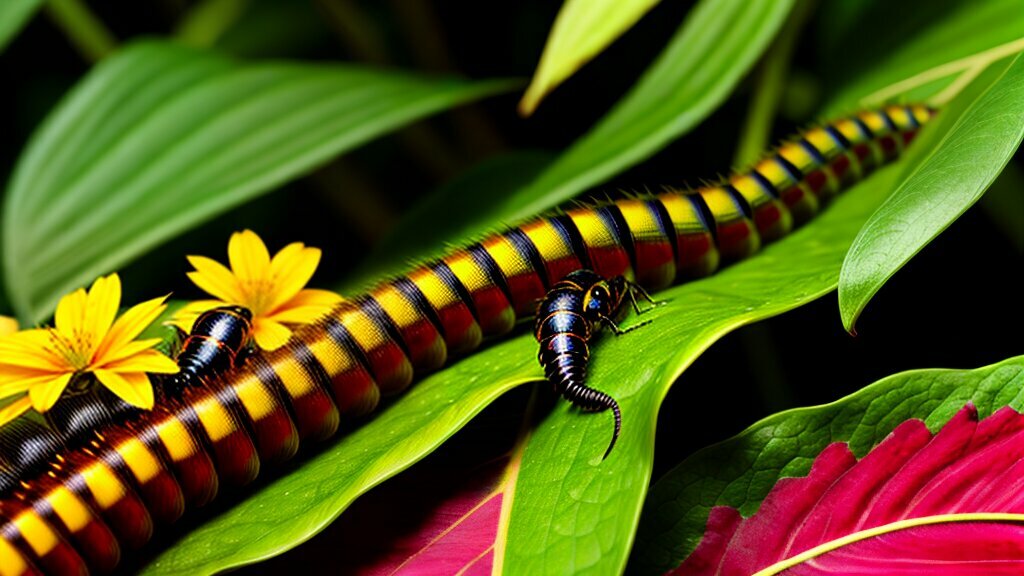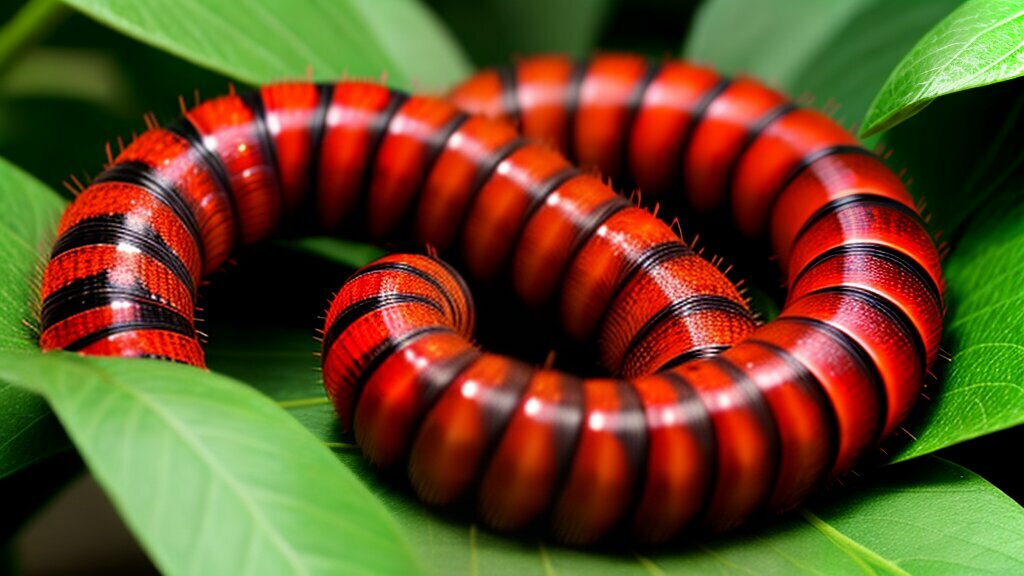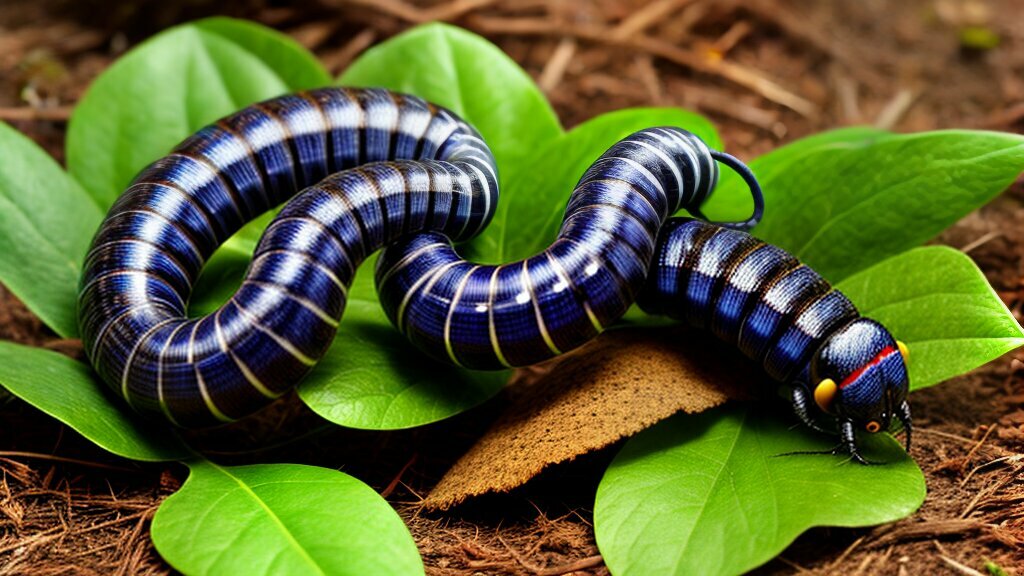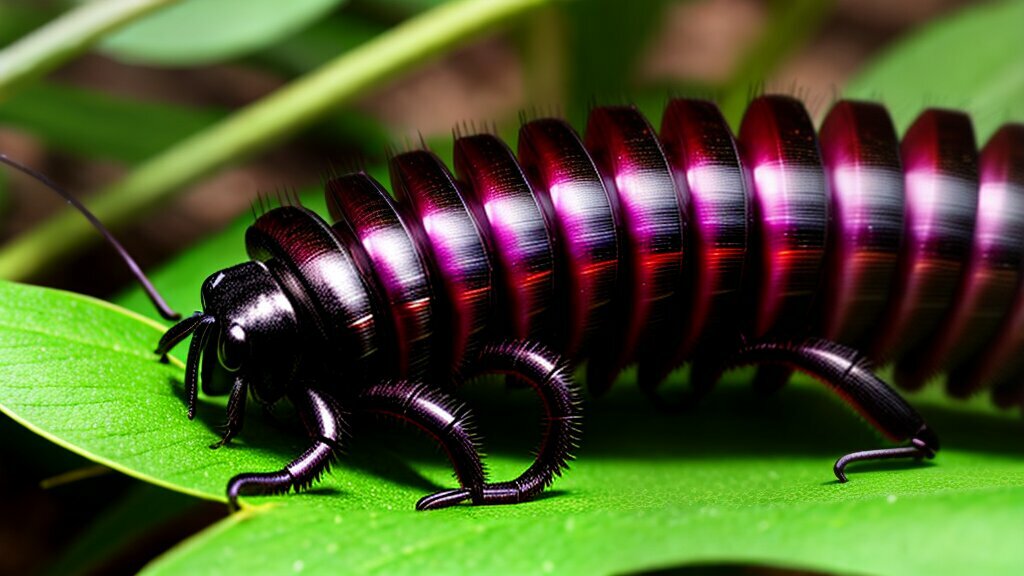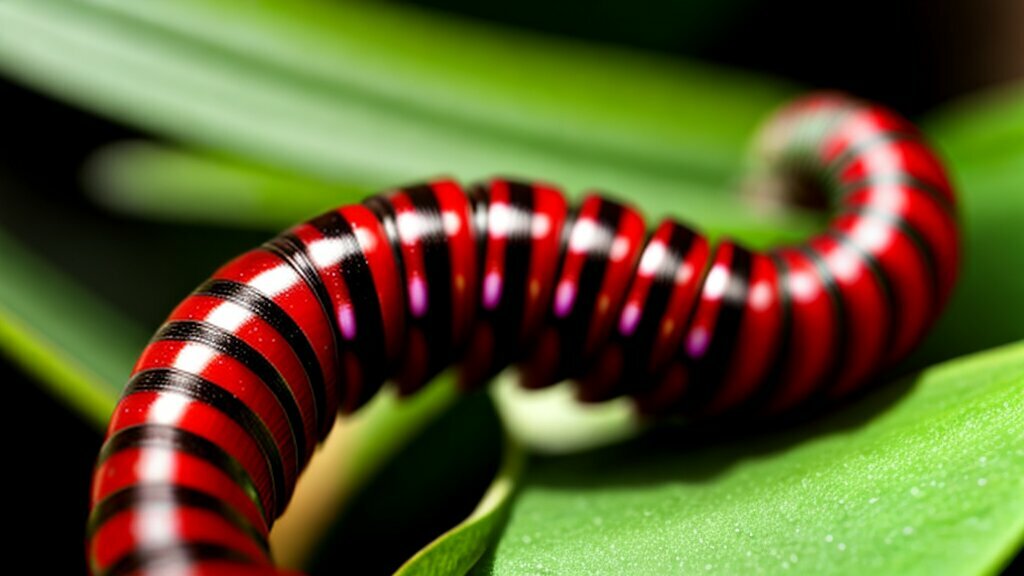If you’re looking for an exotic and captivating creature to add to your collection, look no further than the tropical millipede. These fascinating arthropods boast a striking appearance, with vibrant colors and a multitude of legs that seem to go on forever.
Despite their intimidating exterior, tropical millipedes are gentle, fascinating creatures that have captured the attention of scientists and enthusiasts alike. In this article, we’ll delve into the world of tropical millipedes, exploring their behavior, habitat, and diversity.
Key Takeaways:
- Tropical millipedes are unique and captivating arthropods with vibrant colors and a multitude of legs.
- Despite their intimidating appearance, they are gentle creatures that have captured the attention of scientists and enthusiasts alike.
- In this article, we’ll explore their behavior, habitat, and diversity.
Characteristics of Tropical Millipedes
Tropical millipedes are known for their strikingly vibrant colors and unique patterns. These fascinating creatures have a long, cylindrical body made up of numerous segments, with each segment possessing two pairs of legs. Their size can range from a few centimeters to over a foot long, with some species even reaching up to two feet in length.
What sets tropical millipedes apart is the bright and bold coloration of their exoskeletons, which can range from shades of red, orange, yellow, green, blue, and even purple. Some species have intricate patterns, spots, or bands on their exoskeletons that make them stand out from other species.
In addition to their striking appearance, tropical millipedes have a unique defense mechanism. When threatened, they can release a noxious fluid from their bodies that contains toxic chemicals, deterring predators and other potential threats. This defense mechanism makes them unappealing to predators and gives them an advantage in their natural habitat.
Colorful Millipede Species
One of the most popular and colorful species of tropical millipedes is the African giant millipede (Archispirostreptus gigas). This species can reach up to 11 inches in length and has a brown-black body with bright yellow legs.
Another unique species is the pink-legged millipede (Desmoxytes purpurosea), found in Thailand and known for its vibrant pink and purple coloration. This species is also popular among pet owners due to its striking appearance and low maintenance requirements.
| Species Name | Size | Coloration | Origin |
|---|---|---|---|
| African Giant Millipede | Up to 11 inches | Brown-black body with yellow legs | Africa |
| Pink-legged Millipede | Up to 4 inches | Pink and purple body | Thailand |
| Tiger Millipede | Up to 6 inches | Black body with yellow stripes | Central America |
Overall, the diverse range of species within the tropical millipede family makes them a fascinating topic of study for entomologists, pet owners, and nature enthusiasts alike.
Habitat of Tropical Millipedes
Tropical millipedes inhabit a range of natural environments, often characterized by high humidity and ample organic matter. These arthropods can be found in tropical rainforests, where they thrive in moist soil, leaf litter, and decomposing plant matter.
Leaf litter is a particularly favorable habitat for tropical millipedes, as it provides not only shelter but also a source of nutrition. As these creatures feed on dead leaves and other debris, they contribute to the process of nutrient cycling in their ecosystem.
They may also be found in other locations, including agricultural areas and gardens, particularly those with rich soils and a variety of plant life.
These habitats are crucial for the survival of tropical millipedes, and changes to their environment can have a significant impact on their populations. As such, conservation efforts are necessary to protect these unique and fascinating creatures.
Diversity of Tropical Millipedes
Tropical millipedes exhibit a remarkable diversity in size, shape, and coloration, making them a fascinating group to study and observe. With over 12,000 described species globally, tropical millipedes belong to the class Diplopoda, which means “double-legged” in Greek, referring to their two pairs of legs per body segment.
One of the most striking features of tropical millipedes is their colorful appearance, with some species displaying bright hues of red, yellow, green, blue, and even pink. The coloration is primarily attributed to the presence of pigments in the cuticle and can be used as a warning signal to potential predators.
| Species | Appearance |
|---|---|
| Cyanide Millipede | 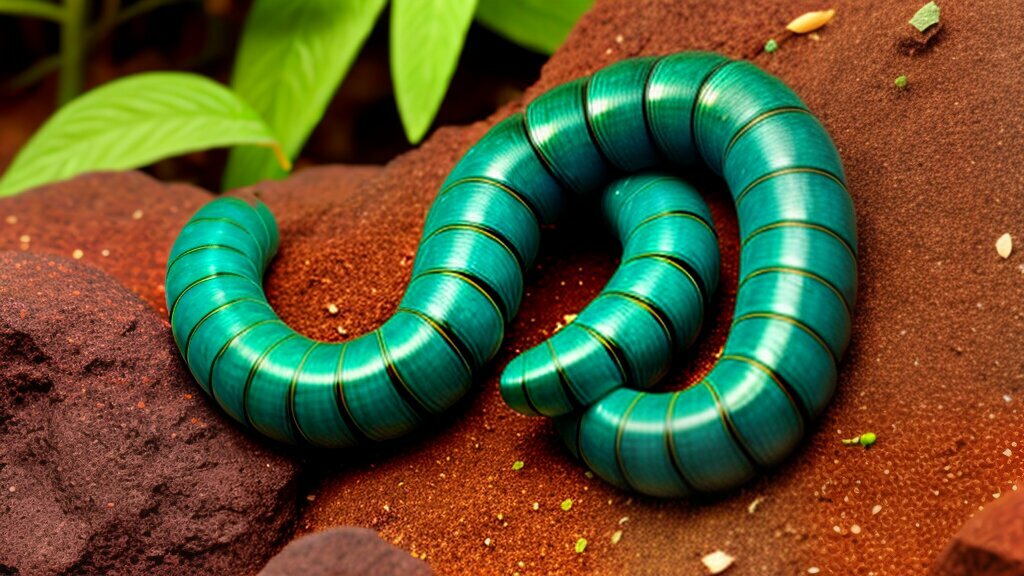 |
| Orange Millipede | 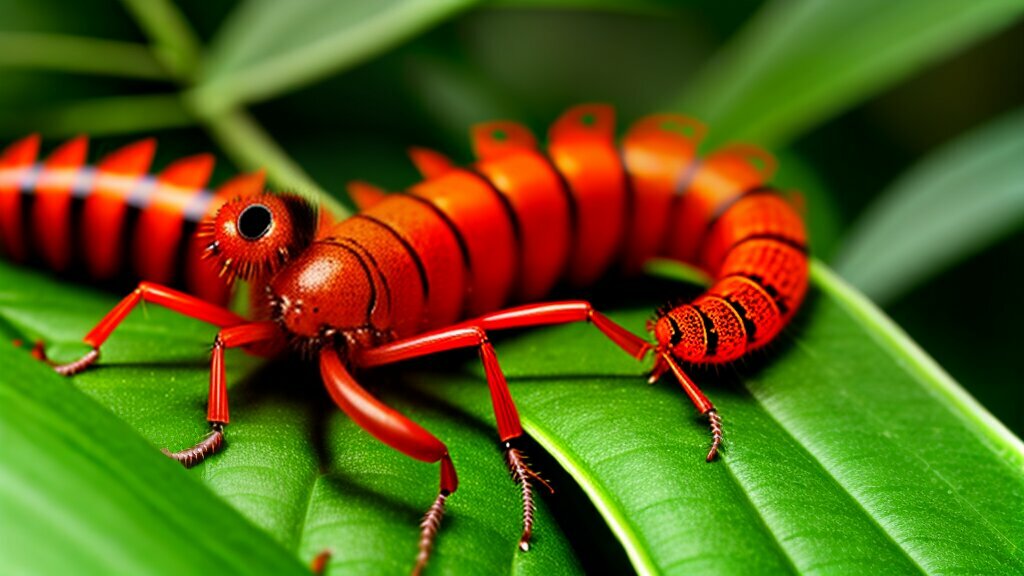 |
| Zebra Millipede | 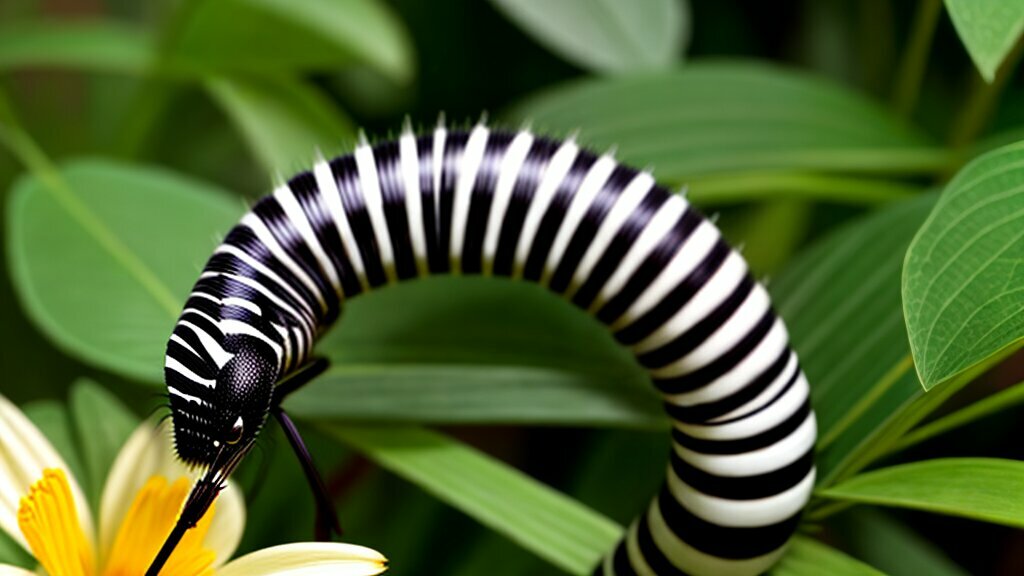 |
Cyanide millipedes, for instance, are known for their bright yellow and black coloration, which serves as a warning to predators of their toxic and defensive capabilities. Likewise, the orange millipede (Orthomorpha sp.) found in southeast Asia boasts a vibrant orange coloration to deter predators. The zebra millipede (Ophistreptus guineensis) has black and white stripes, mimicking the appearance of a venomous caterpillar and providing a visual deterrent to potential predators.
Aside from their unique coloration, tropical millipedes also exhibit a wide range of physical adaptations for survival. Some species have spines, hairs, or other projections on their bodies that can be used for defense, while others have flattened bodies that allow them to squeeze into tight spaces or escape predators more easily. The glow-in-the-dark millipede (Motyxia) found in California uses bioluminescence as a warning signal to predators, lighting up in bright blue-green hues when threatened.
In conclusion, the diversity of tropical millipedes is truly astounding, with each species exhibiting its unique morphological features and adaptations. Their vibrant colors and striking patterns make them a popular choice for hobbyists and enthusiasts alike, as well as a subject of scientific interest and research.
Behavior of Tropical Millipedes
While often thought of as slow-moving creatures, tropical millipedes exhibit fascinating behavior that makes them truly unique.
First and foremost, tropical millipedes are herbivores and feed primarily on decaying vegetation. They use their powerful jaws to break down tough plant material and can consume up to three times their body weight in a single day.
When it comes to movement, tropical millipedes are surprisingly agile. They use their numerous legs to grip onto surfaces and can move quickly when threatened. Some species are also capable of rolling themselves into a tight ball, a behavior known as conglobation, to protect themselves from predators.
In terms of defense mechanisms, tropical millipedes have a few tricks up their sleeves. Some species are capable of excreting toxic chemicals when threatened, which can cause irritation or even blindness in predators. Others may use their bright colors as a warning to would-be attackers of their toxicity.
Interestingly, some species of tropical millipedes engage in a behavior known as phoresy, in which they hitchhike on the bodies of other insects or animals to travel across long distances.
Overall, the behavior of tropical millipedes is both fascinating and complex, making these arthropods a truly remarkable addition to any ecosystem.
Care Tips for Keeping Tropical Millipedes
Millipedes are fascinating creatures and make great pets for enthusiasts looking for something unique. In this section, we’ll provide you with essential tips on how to care for your tropical millipedes.
Enclosure
Tropical millipedes require a spacious and well-ventilated enclosure with a substrate of moist soil, peat moss, or coconut coir. The ideal temperature range is between 70°F to 85°F, and humidity should be maintained at around 75%. A glass or plastic terrarium with a tight-fitting lid is a suitable choice, as it will prevent the millipedes from escaping.
Diet
Tropical millipedes are herbivores and feed on decaying matter, such as leaves, fruits, and vegetables. Provide a varied diet to your millipedes, but avoid feeding them citrus fruits or acidic foods, which can cause digestive issues. Make sure to remove any uneaten food to prevent fungal growth and maintain hygiene.
Maintenance
Cleaning the enclosure regularly is essential to prevent the buildup of waste and bacteria. Remove any uneaten food, feces, or dead millipedes daily. Also, make sure to replace the substrate every three to six months, depending on the number of millipedes and the level of waste produced.
Handling
Tropical millipedes are delicate creatures and must be handled with care. Avoid holding them for extended periods or squeezing them tightly, as they can easily get injured. Instead, let them crawl on your hand or arm while ensuring their safety and comfort.
Health
If you notice any changes in your millipede’s behavior, such as lethargy, lack of appetite, or irregular movement, it could be a sign of illness. Consult a veterinarian with experience in treating exotic pets to ensure your millipede receives prompt and appropriate treatment. Maintain a clean and healthy environment to prevent illness and ensure your millipedes live a happy and fulfilling life.
By following these essential tips, you can enjoy the company of your tropical millipedes and appreciate their unique beauty and behavior.
Interaction with Tropical Millipedes in Nature
Tropical millipedes play an important role in their ecosystem, contributing to nutrient cycling by breaking down decaying matter and recycling nutrients back into the soil. These arthropods are also preyed upon by a variety of animals, including birds, reptiles, and small mammals.
Interestingly, some species of millipedes have formed symbiotic relationships with other organisms, such as ants and beetles. These relationships involve the millipedes providing a source of food and shelter for the other species, while receiving protection and defense in return.
Studies have also shown that tropical millipedes can have a significant impact on the soil structure and soil fertility of their habitats. By burrowing and tunneling through the soil, millipedes aerate the soil and allow water and nutrients to penetrate deeper into the ground, leading to healthier plant growth and increased biodiversity.
Overall, the presence of tropical millipedes in their natural habitats has a positive impact on the overall health and functioning of their ecosystem. These fascinating arthropods help maintain a delicate balance in the environment and are a vital component of the tropical rainforest ecosystem.
Threats and Conservation of Tropical Millipedes
Tropical millipedes are facing numerous threats that jeopardize their existence and hinder their ability to thrive in their natural habitats. Human activities such as deforestation, habitat fragmentation, and mining have significantly reduced the available habitats for these arthropods, leading to a decline in their populations. Additionally, climate change has altered the ecological conditions required for their survival, further exacerbating the situation.
The conservation of tropical millipedes is crucial in ensuring their survival and preserving their role in their ecosystem. Efforts have been made to protect their habitats through reforestation and restoration projects. Eco-tourism has also been used as a means of creating awareness and generating revenue for conservation efforts.
Protecting Tropical Millipedes in Captivity
As pets, tropical millipedes require specialized care, and their welfare should be a top priority. It is essential to provide them with a suitable habitat that mimics their natural environment. This involves using substrates such as peat moss or coconut coir and maintaining proper humidity levels.
Feeding tropical millipedes can also be challenging as their diet consists of various decaying plant matter, which can be hard to replicate in captivity. However, it is crucial to provide them with a balanced diet that meets their nutritional requirements.
Overall, the conservation of tropical millipedes requires a multi-faceted approach that involves habitat protection, awareness campaigns, and responsible pet ownership. By taking concerted efforts to protect these arthropods, we can ensure that they continue to thrive in their natural habitats and contribute to the diversity of the world’s ecosystems.
Fascinating Facts about Tropical Millipedes
Did you know that there are over 10,000 known species of millipedes in the world? Of these, approximately 15% are found in the tropics. Tropical millipedes are some of the most fascinating arthropods out there, with various exceptional features and abilities. Let’s explore some of the most intriguing and lesser-known facts about these exotic creatures.
- They have countless legs, but not actually a thousand. Contrary to their name, millipedes don’t have a thousand legs. Most species have around 200-400 legs, but the record holder has about 750 legs.
- They are more related to crustaceans than insects. Millipedes belong to the phylum Arthropoda, which puts them in the same family as shrimps, crabs, and lobsters.
- They are nocturnal, and some glow in the dark. Many tropical millipedes are active at night, and some have bioluminescent properties, meaning they can emit light from their bodies.
- They have a unique way of defending themselves. When threatened, millipedes can curl up into a tight spiral, protecting their vulnerable legs and body with a hard exoskeleton. Some species also secrete a noxious liquid that deters predators and irritates human skin.
- They play an important role in the environment. Millipedes are decomposers, which means they help break down dead plant matter and enrich the soil with nutrients. They also provide food for other animals, such as birds and rodents.
- They are incredibly diverse in size, shape, and color. Tropical millipedes come in a wide range of shapes and sizes, from the tiny 2-3 millimeter-long species to the giant African millipede, which can measure up to 32 centimeters in length. They also exhibit a vast array of colors and patterns, ranging from vibrant blues and reds to subtle browns and greens.
- They can live for several years. Depending on the species, millipedes can live anywhere from a few months to several years. The oldest known millipede fossil dates back to over 400 million years ago, making them one of the oldest land-dwelling creatures on Earth.
- They have unique mating habits. Millipedes have a fascinating courtship ritual, where the males secrete pheromones and perform an elaborate dance to attract females. Some species also engage in copulation trains, where multiple males take turns mating with a single female.
These are just a few of the many fascinating facts about tropical millipedes. Their diversity, beauty, and distinctive behavior make them compelling creatures to study and admire.
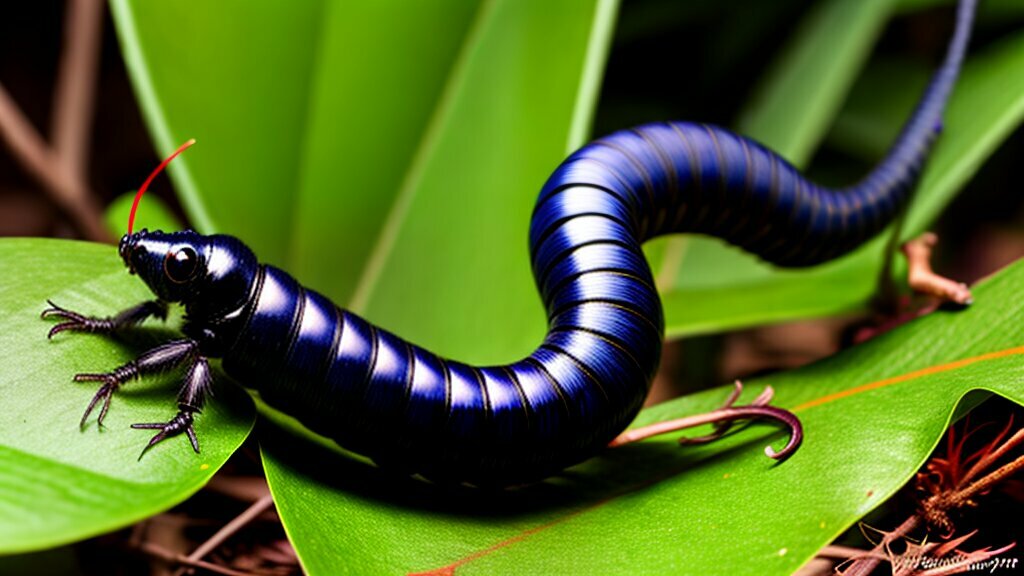
Conclusion
From their stunning colors and unique physical features, to their intriguing behaviors and ecological significance, tropical millipedes are truly fascinating creatures. As we have learned throughout this article, these exotic arthropods play an important role in the ecosystems they inhabit, contributing to nutrient cycling and serving as a valuable food source for other organisms.
However, as with many species, tropical millipedes face numerous threats and challenges, including habitat loss, climate change, and human activities. It is important that we work to protect and conserve these remarkable insects, and their natural habitats, so that future generations may continue to marvel at their beauty and wonder.
Whether you are a passionate hobbyist, a curious student, or simply someone who appreciates the wonders of nature, exploring the world of tropical millipedes is sure to be an unforgettable experience.
Tropical Millipede FAQ
Q: What are tropical millipedes?
A: Tropical millipedes are exotic arthropods that belong to the class of insects. They are known for their fascinating features and unique characteristics.
Q: What are the characteristics of tropical millipedes?
A: Tropical millipedes are known for their vibrant colors and diverse patterns. They exhibit a wide range of physical and behavioral traits that make them fascinating creatures to observe.
Q: Where do tropical millipedes live?
A: Tropical millipedes thrive in habitats such as tropical rainforests, moist soil, and leaf litter. These environments provide the necessary conditions for their survival.
Q: How diverse are tropical millipedes?
A: Tropical millipedes display a great diversity of species, each with its own unique morphological features and adaptations. Their wide range of characteristics makes them a fascinating group to study.
Q: What is the behavior of tropical millipedes?
A: Tropical millipedes exhibit interesting behaviors such as feeding habits, movement patterns, and defense mechanisms. These behaviors contribute to their survival and interaction with their environment.
Q: How can I care for tropical millipedes?
A: When keeping tropical millipedes as pets, it is important to provide them with suitable enclosures, a proper diet, and regular maintenance. Following these care tips will ensure the well-being of your millipedes.
Q: What is the interaction of tropical millipedes in nature?
A: Tropical millipedes play a significant role in nutrient cycling and have interactions with other organisms in their ecosystem. Understanding their ecological significance helps us appreciate their importance in the natural world.
Q: What are the threats and conservation efforts for tropical millipedes?
A: Tropical millipedes face challenges such as habitat loss, climate change, and human activities. Conservation efforts are crucial for protecting these unique creatures and preserving their natural habitats.
Q: What are some fascinating facts about tropical millipedes?
A: Tropical millipedes possess extraordinary abilities and display intriguing behaviors. Exploring their fascinating facts reveals the wonders of these captivating creatures.
Conclusion
The tropical millipede is an intriguing and captivating creature that surprises us with its diversity, behavior, and unique characteristics. By understanding and appreciating the fascinating world of tropical millipedes, we can contribute to their conservation and further our knowledge of these remarkable insects.

